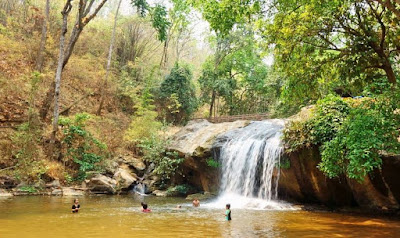Thailand’s strict COVID measures meant international travel has ground to a halt during the pandemic.
But now, with tourism set to start up once again, the country is not sure it wants the same type of visitors to return to its shores.
Historically the country has attracted a huge number of tourists, from unruly gap year backpackers to large tour groups who show little care for the environment.
Now Thailand wants to move on from its ‘hedonistic’ history of mass tourism, with Tourism Minister Phiphat Ratchakitprakarn stating the focus should be on “high-end travellers, rather than a large number of visitors.”
One location that would be glad to see change is the Phi Phi islands, world-renowned for their white beaches and clear blue waters. While lockdowns kept international travellers away, this region was quietly recovering from years of overtourism.
Before the pandemic, Phi Phi National Park saw more than 2 million visitors every year with 6,000 people a day making the trip to the world-famous Maya Bay. This uncontrolled mass tourism left the region’s delicate ecosystem in disarray.
“The coral cover has decreased by more than 60 per cent in just over 10 years,” Thon Thamrongnawasawat of Kasetsart University in Bangkok tells AFP.
The problem got so bad that in 2018, Thon pushed authorities to close part of Maya Bay. It has been closed ever since and, with strict travel restrictions meaning visitor numbers in the region dwindled to almost zero, nature has started to recover.
Endangered whale sharks have been seen off the coast, turtle species have returned and more than 40 per cent of the coral fragments replanted in Maya Bay have survived.
Thon calls it “a very satisfactory figure obtained thanks to the absence of visitors.”
To make a full recovery though, these coral reefs would need another two decades without visitors. (continues)
Source BangkokJack
But now, with tourism set to start up once again, the country is not sure it wants the same type of visitors to return to its shores.
Historically the country has attracted a huge number of tourists, from unruly gap year backpackers to large tour groups who show little care for the environment.
Now Thailand wants to move on from its ‘hedonistic’ history of mass tourism, with Tourism Minister Phiphat Ratchakitprakarn stating the focus should be on “high-end travellers, rather than a large number of visitors.”
One location that would be glad to see change is the Phi Phi islands, world-renowned for their white beaches and clear blue waters. While lockdowns kept international travellers away, this region was quietly recovering from years of overtourism.
Before the pandemic, Phi Phi National Park saw more than 2 million visitors every year with 6,000 people a day making the trip to the world-famous Maya Bay. This uncontrolled mass tourism left the region’s delicate ecosystem in disarray.
“The coral cover has decreased by more than 60 per cent in just over 10 years,” Thon Thamrongnawasawat of Kasetsart University in Bangkok tells AFP.
The problem got so bad that in 2018, Thon pushed authorities to close part of Maya Bay. It has been closed ever since and, with strict travel restrictions meaning visitor numbers in the region dwindled to almost zero, nature has started to recover.
Endangered whale sharks have been seen off the coast, turtle species have returned and more than 40 per cent of the coral fragments replanted in Maya Bay have survived.
Thon calls it “a very satisfactory figure obtained thanks to the absence of visitors.”
To make a full recovery though, these coral reefs would need another two decades without visitors. (continues)
Source BangkokJack
VISA AGENT / How to register for: THAI PASS
.































